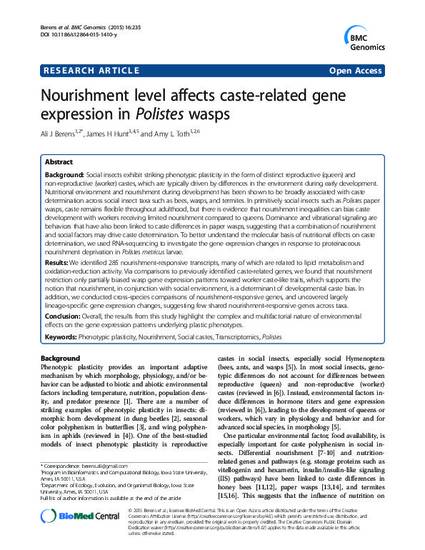
Background: Social insects exhibit striking phenotypic plasticity in the form of distinct reproductive (queen) and non-reproductive (worker) castes, which are typically driven by differences in the environment during early development. Nutritional environment and nourishment during development has been shown to be broadly associated with caste determination across social insect taxa such as bees, wasps, and termites. In primitively social insects such as Polistes paper wasps, caste remains flexible throughout adulthood, but there is evidence that nourishment inequalities can bias caste development with workers receiving limited nourishment compared to queens. Dominance and vibrational signaling are behaviors that have also been linked to caste differences in paper wasps, suggesting that a combination of nourishment and social factors may drive caste determination. To better understand the molecular basis of nutritional effects on caste determination, we used RNA-sequencing to investigate the gene expression changes in response to proteinaceous nourishment deprivation in Polistes metricus larvae. Results: We identified 285 nourishment-responsive transcripts, many of which are related to lipid metabolism and oxidation-reduction activity. Via comparisons to previously identified caste-related genes, we found that nourishment restriction only partially biased wasp gene expression patterns toward worker caste-like traits, which supports the notion that nourishment, in conjunction with social environment, is a determinant of developmental caste bias. In addition, we conducted cross-species comparisons of nourishment-responsive genes, and uncovered largely lineage-specific gene expression changes, suggesting few shared nourishment-responsive genes across taxa. Conclusion: Overall, the results from this study highlight the complex and multifactorial nature of environmental effects on the gene expression patterns underlying plastic phenotypes.
Available at: http://works.bepress.com/amy-toth/8/

This is an article from BMC Genomics 16 (2015) 1, doi:10.1186/s12864-015-1410-y. Posted with permission.